ZHCSBN3F August 2013 – March 2019
PRODUCTION DATA.
- 1 特性
- 2 应用
- 3 说明
- 4 修订历史记录
- 5 Pin Configuration and Functions
- 6 Specifications
- 7 Detailed Description
- 8 Application and Implementation
- 9 Power Supply Recommendations
- 10Layout
- 11器件和文档支持
- 12机械、封装和可订购信息
8.2.3.2 Application Performance Plots
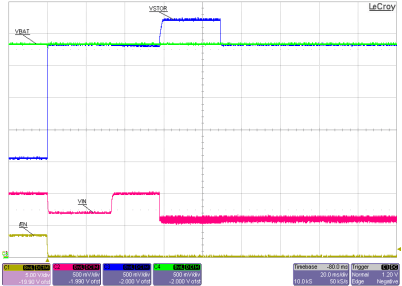
| VIN_DC = 1.0 V power supply 100Ω series resistance |
| VBAT = 3.4-V charged Li coin cell |
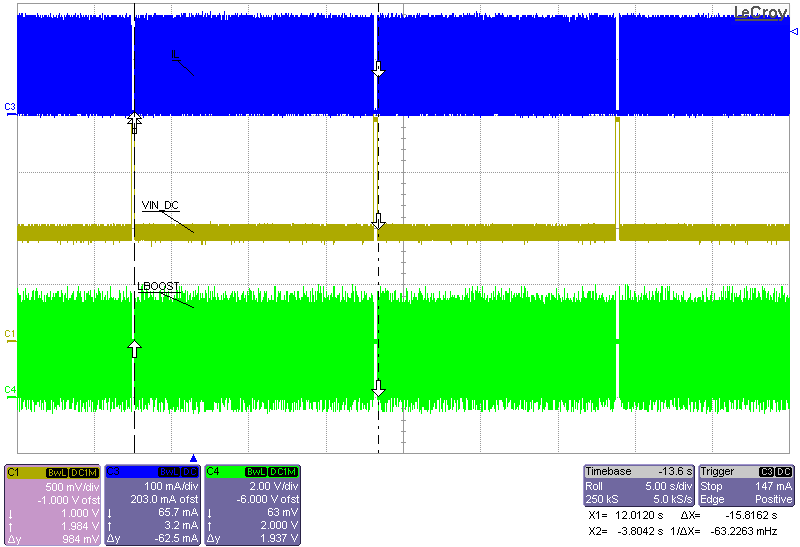
| VIN_DC = sourcemeter with VSOURCE = 2.0 V and compliance of 43 mA |
| VBAT_SEC = sourcemeter with VSOURCE = 3.0 V and compliance of 1 A |
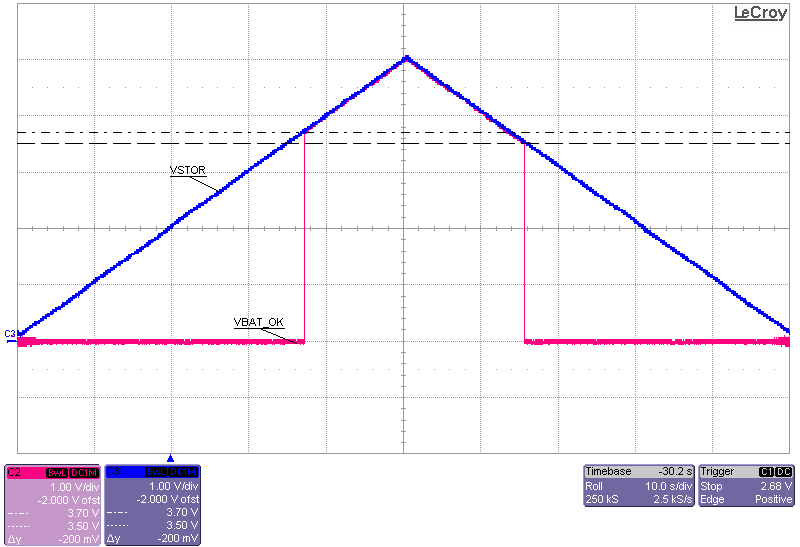
| VIN_DC floating |
| No storage element on VBAT or VBAT_PRI |
| VSTOR artifically ramped from 0 V to 5 V to 0 V using a function generator |
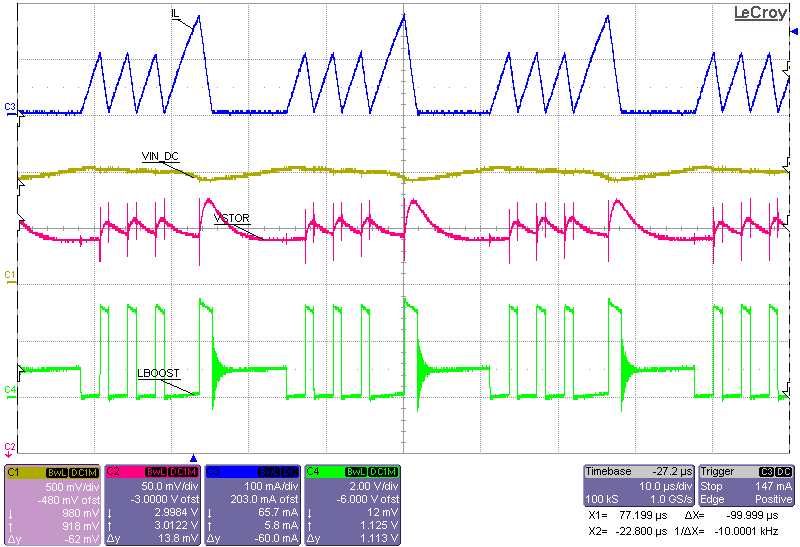
| VIN_DC = sourcemeter with VSOURCE = 2.0 V and compliance of 43 mA |
| VBAT_SEC = sourcemeter with VSOURCE = 3.0 V and compliance of 1 A |
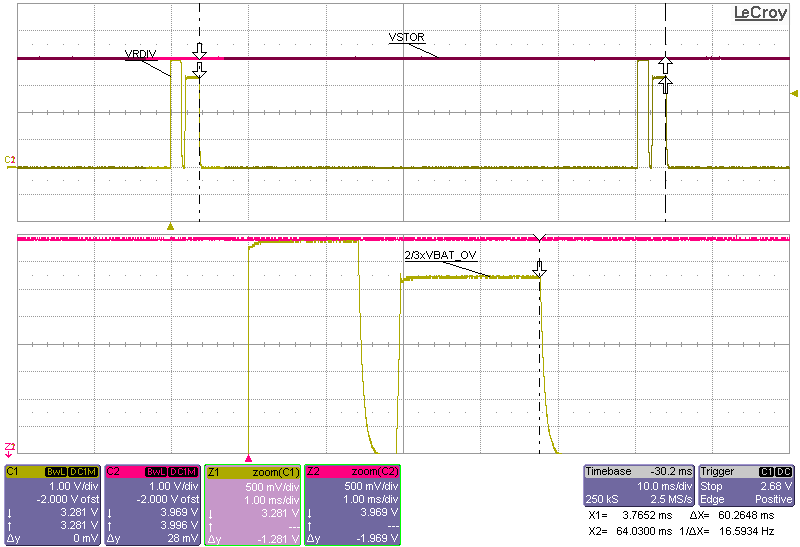
| VIN_DC = sourcemeter with VSOURCE = 2.0 V and compliance of 43 mA |
| VBAT_SEC = sourcemeter with VSOURCE = 4.0 V and compliance of 1 A |